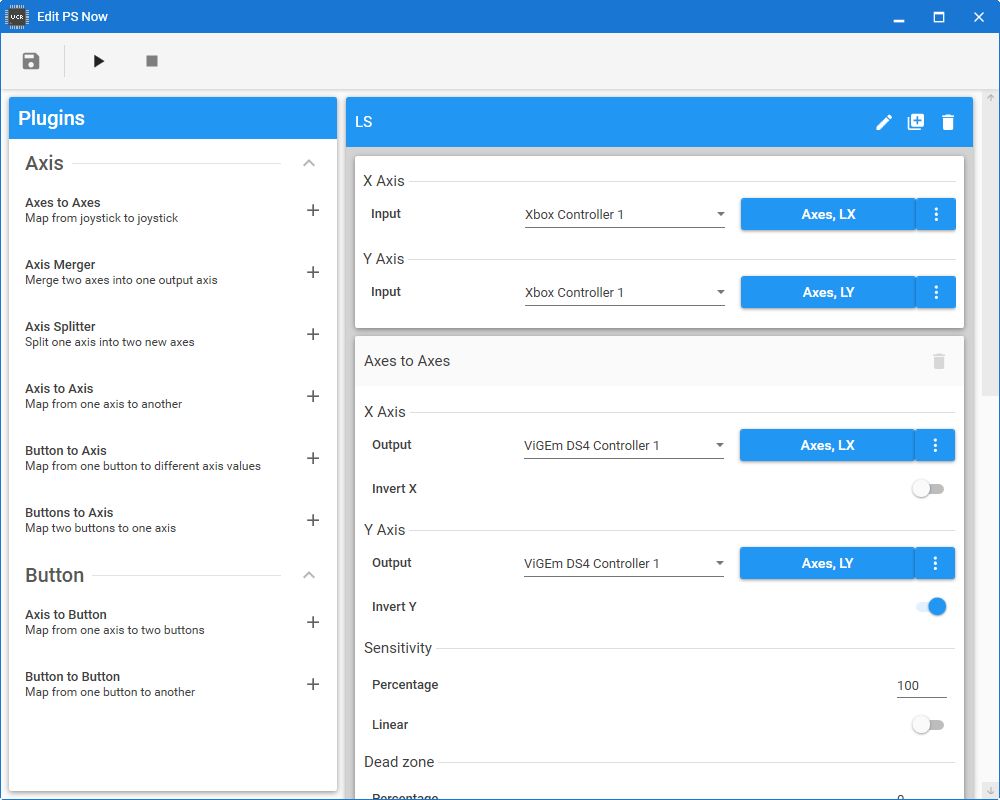

This makes it easy for the end-user to add the configuration options that they need, leaving them with only the logic that connects them to worry about. Regular Controls (EditBoxes etc) can also be added, and the values the user enters into these will automatically be remembered between runs, and their value is always easily accessible by the plugin code.
#Ucr universal control remapper code
to virtual output devices and is a Key Mapping App in the OS & Utilities category. Re: Universal Control Remapper (UCR) - v0.1.22 28th Oct 2018 Post by evilC Tue 6:57 pm The Xbox 'guide' button is not exposed by default via XInput, there is a 'secret' endpoint which can access it, but I cannot seem to get the sample code to work.
#Ucr universal control remapper windows
UCR: Universal Control Remapper is described as Universal Control Remapper is a Windows application which allows the end-user to remap any inputs from devices, such as keyboards, mice, joysticks, racing wheels, eye trackers, etc. When you add an Output Control, you are given an object which you can call methods on to set the state of the output which the end-user selected. UCR: Universal Control Remapper Alternatives. When you add an Input Control, you can pass a callback to be called when the input changes state. Input and Output GuiControls are custom GuiControls which allow the end-user, at run time, to select what inputs and outputs to use. This is done through a collection of custom GuiControls. In order to do so, you create a plugin file, and define it’s inputs, outputs, and configuration options. So with all the tools in place, I decided upon the following broad architecture:įrom an end-user’s perspective, everything boils down ultimately to a plugin.Ī plugin generally does one single unit of work – eg “Map X to Y”.Ī number of basic plugins are provided (Map Button to Button, Axis To Axis, Button and Axis to each other etc) but as mentioned, it is intended to be as simple as possible to create a new plugin. Luckily, there is a fork of AutoHotkey called AutoHotkey_H which does the first two, and the author is a rather amenable chap, and we collaborated to implement dynamic scrollable GUIs in AHK_H’s C++ source code. I needed resizable, scrollable, dynamic GUIs. I needed to be able to spin up multiple copies of AHK (To detect input, and allow multiple profiles, and rapid profile switching) I needed to be able to dynamically include a script which derived from a class in the main (running) code. The limitations of what I could do in AHK presented the following hurdles: Towards the end of 2015, I started examining what would be required to achieve such a goal. Something where end-users could add new features themselves? What if you could build something like UJR, but modular, and working with many kinds of inputs. The success of UJR surprised me – it seemed to plug a gap in the market and seemed to have rapidly become the go-to tool to fix numerous joystick woes.


 0 kommentar(er)
0 kommentar(er)
